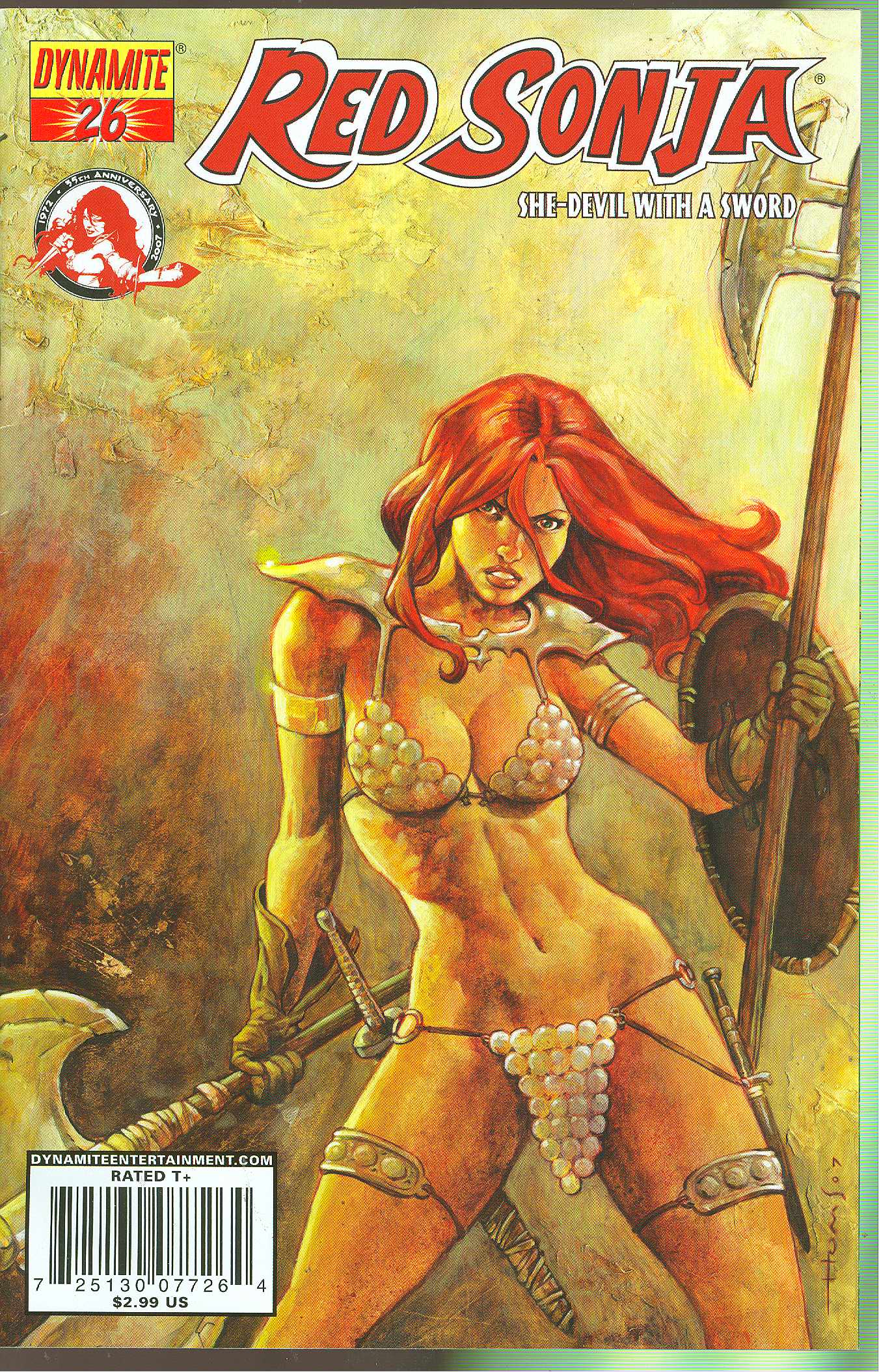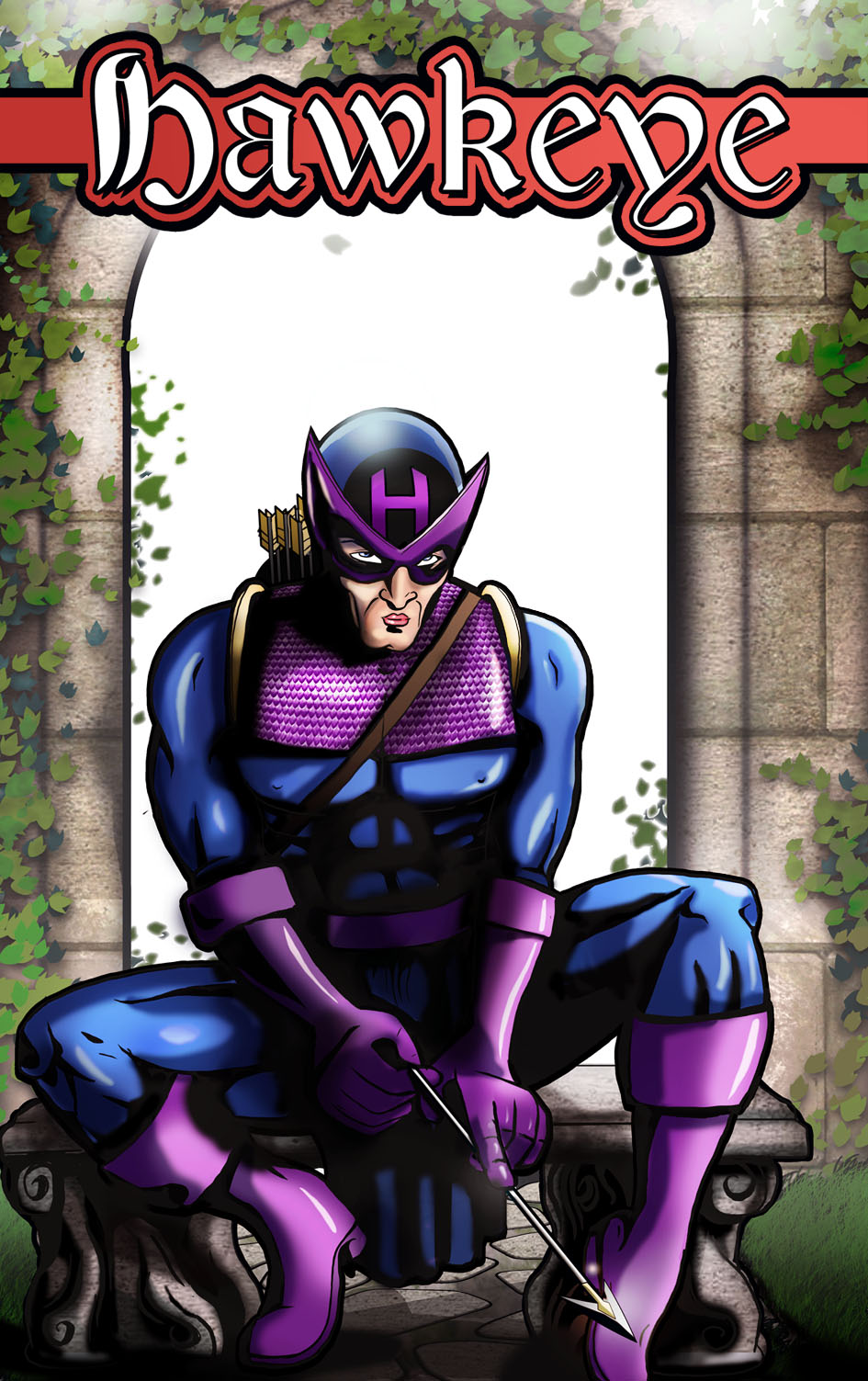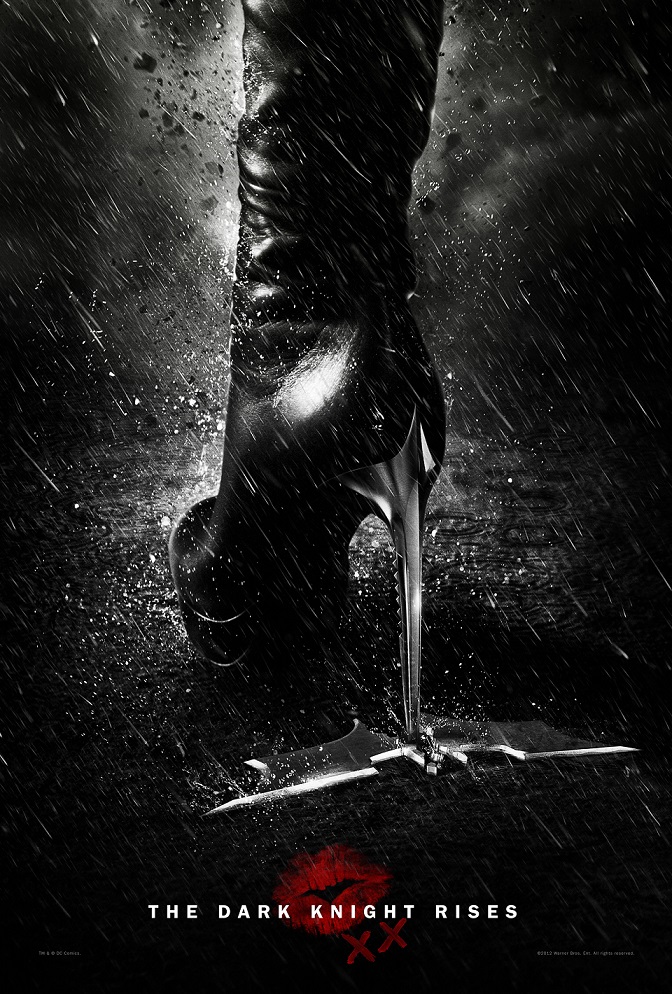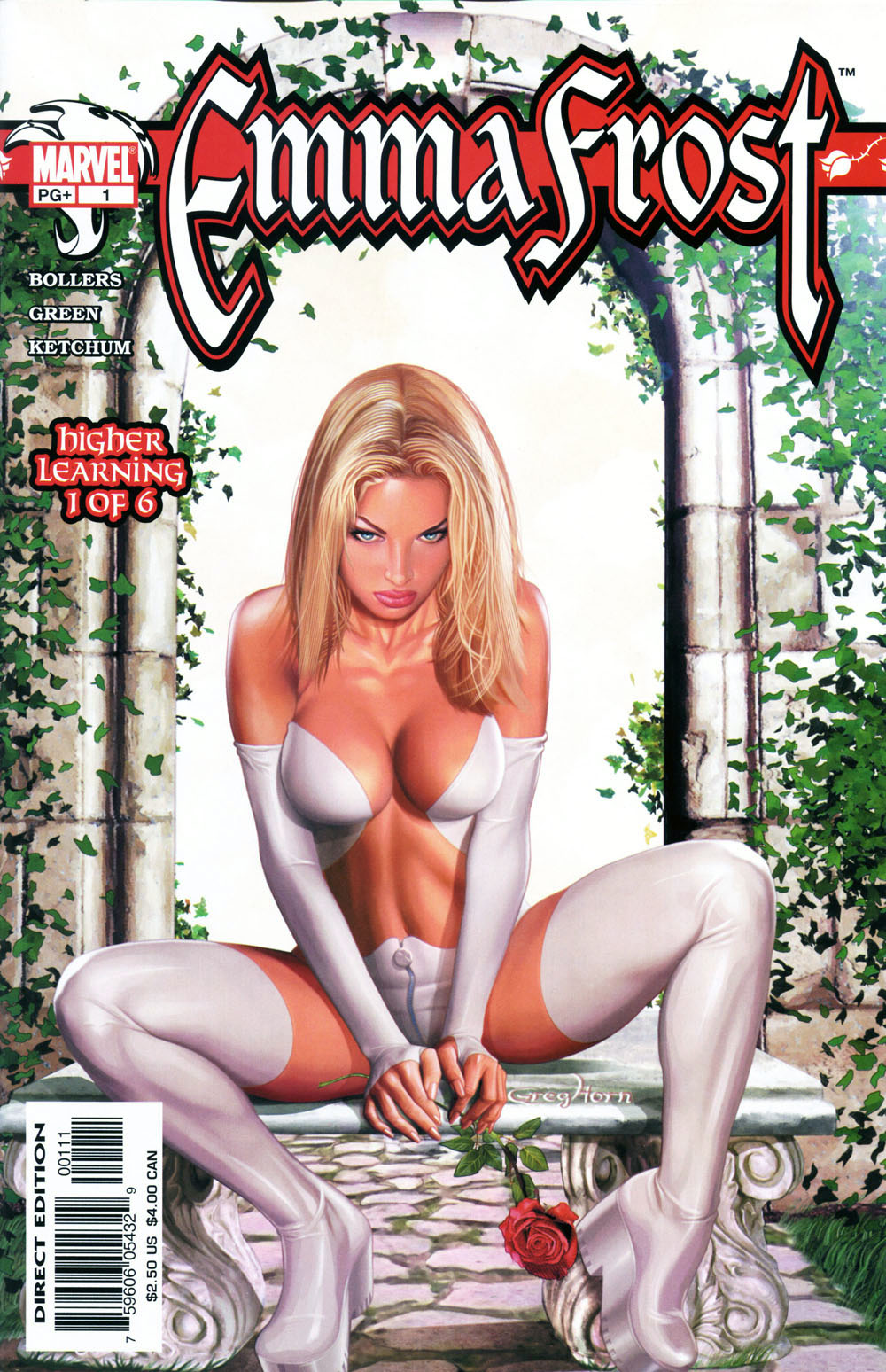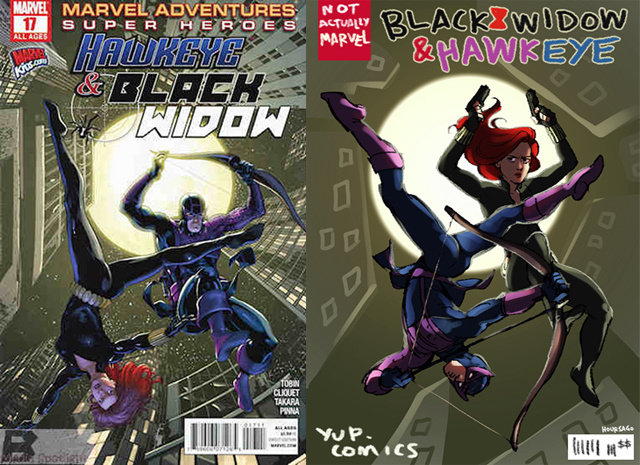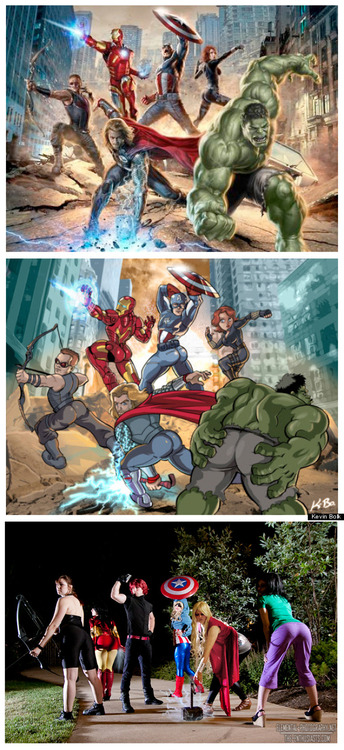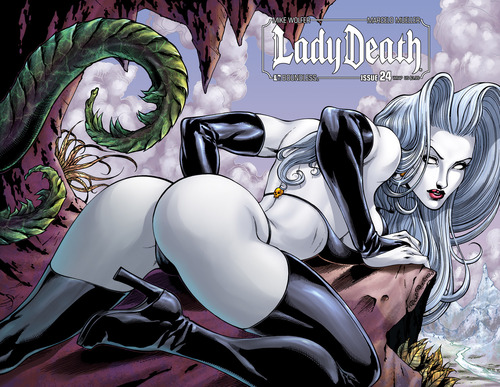The image to the left has two erroneous qualities. The first and often more obvious one is that Batman is a property of DC Comics, while Emma Frost, the Scarlet Witch and the Black Cat belong to Marvel Comics. The second and less obvious as that while the male character stands, almost suavely pondering his current situation (with a costume that covers up his entire body,) the female characters are simply striking “enticing” and/or “sexy” poses, and their costumes (all default) are less than whole.
Truth is, the world of comics is often under justified fire for this double standard that it is known to apply to its characters. At first glance, there is no double standard. In general, the term ‘physique’ takes on an exaggerated and beyond-perfected reflection in comic books. Where heroes are concerned, hardly ever do you meet a man without an 8-pack and excellent muscle definition; on the other side of the spectrum all women seem to have perfect hourglass figures and prominent breasts (often showed off with impractical cleavage) to focus on just how physically beautiful the characters are. However, the standards begin where heroes usually wear, as exemplified by the initial image, body-covering (albeit also muscle-showing) outfits while most women are clad either in skin-tight catsuits or chain-mail bikinis for armor (a-la Red Sonja) are easily identifiable ways of fanservice, locking the medium in a strange place. Sex is rarely the focus of mainstream comics, but sexy definitely is.
© thehawkeyeinitiative.com
Recently, however, one apparent shortcoming of this approach has come under fire, lampooned by a group of avid comic-book readers with a penchant for art, examining just how ridiculously the female form is being distorted. This movement was dubbed “The Hawkeye Initiative.” The image below may appear out of context, but it will fit into the third section; as for now, let it set the tone for a decorum description of fanservice.
© thehawkeyeinitiative.com
The Basic Tenets of Fanservice
“Fanservice” is actually (or was initially) an anime / manga term. TvTropes defines fanservice as “Gratuitous display of characters in skimpy clothing, or none at all, under the assumption that it will attract or ‘reward’ viewers.” While fanservice employing male characters isn’t uncommon, a majority of the fanservice subjects are female characters. In fact, TvTropes also has two tropes under the same heading: “Mr. / Ms. Fanservice,” pointing at a character existing mostly to give the audience their “reward” of eye-candy. DC Comics character Power Girl is an example of this: her costume (see below) features a circular cleavage-window. It was rumored that her creator had made her breasts bigger in every successive issue, waiting for a complaint to arrive so he would stop, but in point of fact, Wally Wood simply made Power Girl’s cleavage her most prominent and easily recognizable physical feature. The point of fanservice is similar: to give the audience something to admire from an aesthetics standpoint.
The mainstay of superhero costumes is skin-hugging spandex when scantily-clad isn’t the norm, and mostly, whether cloth, leather or latex, it shows off the sculpted and/or perfected body it is wrapped around. For male characters this means their costume somehow manages to show off muscle definition as if it were body paint; for female characters it has much the same effect, except it has more of a focus on “curves.” Another point that is also prominent comes in the form of another trope: “Combat Stilettos.” The below image was taken from a promotional poster for the Christopher Nolan’s “The Dark Knight Rises” and depicts Catwoman’s boot on a bat symbol. The reason why this image, despite being taken from a product of a different medium, is so striking is that in a comic book environment, certain rules (posture, balance, etc.) can be bent to the plot’s desire. A movie has to observe, especially with claims to realism, certain real-life rules, one of which is broken when this image fits the female protagonist with stiletto heels: it is notoriously difficult to move, let alone efficiently fight with such footwear.
© thehawkeyeinitiative.com
Fanservice isn’t complicated. Lingerie, exposed skin around the lingerie, even “battle” outfits being impractically skimpy, an emphasis on the assorted sexualized parts of the character (buttocks, breasts, legs, back, etc.) Emma Frost from the Marvel Universe is, for instance, universally known for her general outfit consisting mostly of lingerie and above-knee-high, high-heeled boots with a cape. The trope used to describe this outfit type is “Stripperific” and it describes how “clothing for characters will often be impractically sexy for its chosen application.” The outfit, if operating within this medium, is not subject to practicality for the underlying reason that its existence is an expression of the “Rule of Sexy”, which states that “The limit of the Willing Suspension of Disbelief for a given element is directly proportional to its degree of sexiness.” Thus such depictions require the audience to suspend their disbelief that a chain-mail bikini can in any way be considered “armor” or would be warn by a seasoned warrior as a method of protection, because it shows off the heroine’s body.
© thehawkeyeinitiative.com
Where comics are concerned, fanservice also has a dimension that lies behind The Hawkeye Initiative. Artists, in order to accentuate certain parts of their female characters, often contort their bodies into anatomically impossible positions to do so. A particularly guilty party would be Rob Liefeld, an artist infamous for his gross anatomical trespasses and disproportionate drawings. The below image, rather infamous for its complete disregard for how the human spine can bend, how legs are positioned vis-à-vis one another and how the breasts are supposed to meet what is below them, intends to “accentuate” the two qualities of a given heroine that separates her from her male counterparts: put bluntly, tits and (more prominently) ass.
Taking the Initiative
The Hawkeye Initiative as a movement came challenging the status quo by aiming to do one thing: “illustrate how deformed, hyper-sexualized, and impossibly contorted women are commonly illustrated in comics, books, and video games.” How to “fix every Strong Female Character pose in superhero comics,” you ask? Simple: “replace the character with Hawkeye doing the same thing.” The archer known as Hawkeye was chosen due to a very simple comparison point. Pictured below is the cover image for “Hawkeye & Black Widow,” featuring a (especially since the “Avengers” movie) pairing often favored by fans. To the left is the actual cover. To the right is The Hawkeye Initiative fix version.
© thehawkeyeinitiative.com
As can be seen in the image, both characters are descending from a high point, but one (Hawkeye) is leaping down with a sensible pose while the other (Black Widow) has to exhibit a more acrobatic pose that shows displays her finely-toned butt. THI’s fix changes two things: firstly, it swaps the title by switching the top billing and giving it to the heroine, thus subverting the “male hero-first” titling. The second thing is the characters switch places and poses. The point being made is actually very simple: had a sensible, perhaps even probable pose (as the angle at which her upper body must turn is bordering on painful) then the swap would not have caused too much of a change. As can be seen above, the result is either hilarious or ridiculous, yet thought-provoking in both cases. In order to further illustrate the point, let us posit another image.
© thehawkeyeinitiative.com
Message Received
The message behind THI is very simple, and is written on several of their fixes as well: challenging the false image of “empowerment.” The “strong female characters” in comics have been victims of blatant sexualization due to being women, and thus their empowerment is a sham. Furthermore, in creating this sham-empowerment with fanservice tenets (Combat Stilettos being a particularly obvious offender) the artists are also challenging basic features of anatomy in attempt to over-emphasize (certain features of) the female form to the point where it becomes ubiquitous.
© thehawkeyeinitiative.com
Their method of choice to put this onto display is marvelous in itself: “empowerment” is unfortunately not a gender-neutral term, and fiction in general has often been guilty of using double standards where this is concerned. THI often scrawls messages such as “empowered enough for you?”, “too empowered”, “empowerment!” onto their fixes – ham-fisted at first glance, the actual expression of the message seems almost unnecessary. But it makes it all the bolder, as The Hawkeye Initiative seeks to raise awareness, while poking fun at, double standards employed in comic book artistry.


